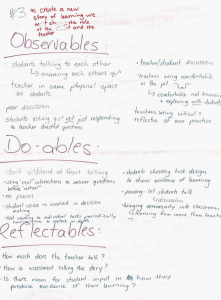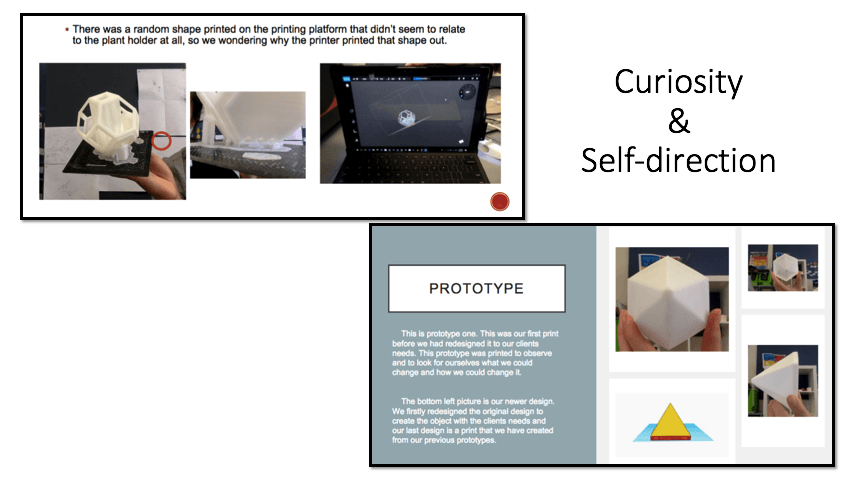At our first whole school professional session for 2019, Ron Ritchhart presented the Cultures of Thinking in Action and we were asked to choose one to focus on. I chose number #3 as I’m interested in creating opportunities for student agency.

Cultures of Thinking in Action @ Ron Ritchhart, Cultures of Thinking Project, 2018

Cultures of Thinking in Action
Then, with other teachers who were also interested in # 3, we created a chart to explore what the ‘Observables’, the ‘Do-ables’ and the ‘Reflect-ables’ would look like.
At the end of the session, Ron challenged us to design a learning experience around our chosen Culture of Thinking in Action and to share the ‘observables, the ‘do-ables and the ‘reflect-ables’ at our next professional development.
What were the Do-ables?
To design a learning experience that changed the role of the student and the teacher, #3, I saw an opportunity in my Year 9 Design and Technology learning unit.
This unit of study challenges students to design a 3D object for a client that solves a design problem for them. The students’ challenge begins with making decisions about finding a person in the school community who has a ‘design problem’ and to initiate a dialogue.
To support students to become active creators and problem solvers, #3, I used two Making, Thinking Routines. I hoped to give students a sense of maker empowerment as they would have to engage with other people’s needs and be sensitive to design and design solutions.
This three-week lesson program also created the opportunity for me to change my role to one of coaching, mentoring and being a community navigator. The students became the initiators to find a design problem and to create a solution for someone in the school community. They worked in groups and I mentored them in their decision making as a facilitator to,
… create the conditions for student-driven and student-centered design simply by asking open-ended questions and stepping back to listen…
Sarah Sheya, Elevating Youth Voice: The power of Participatory Design.
What were the Observables?

Students as problem solvers and active creators
Student curiosity
By listening to the students I heard them wondering about the design problems they could observe in the school, how they could contact a client with a design problem and how to present and design solutions to suit their client.

Student curiosity and self-direction.
Student Self-direction
Students made the decision about who their “client” would be and sent them an email requesting an interview. We also had student-teacher conversations about possible objects that could offer potential solutions that they could 3D print on the school’s printers efficiently.
Student reflections
Once students had an idea of their object, they used the Making Move, Observational Drawing to look more closely at the details and to consider the limitations of 3D printing. We then used the Imagine If… Making Move to imagine what could be invented and to develop prototypes.
The two Google presentations below are students’ reflections about how the Making Moves, Observational Drawings and Imagine If… were important for their learning.
Reflectables
In reflection on this learning unit, the students’ writing and images are positive evidence of their engagement and self-direction to be proactive and inventive. Using these two Making Moves created the environment for students to look at new perspectives and to consider how people interact with their design. They also created the space for me to stand back and ask questions and for the students to develop a sense of empowerment and self-direction.
Resources & Readings
Sarah Sheya, Elevating Youth Voice: The Power of Participatory Design.
Maker Empowerment Revisited by Shari Tishman
Making Moves & Thinking Routines
The design thinking routines are from, Agency by Design
http://www.agencybydesign.org/inquiry-cycle

Good information, thanks.